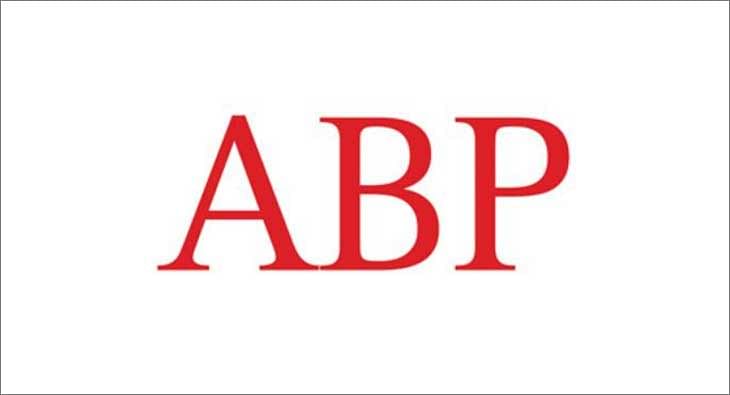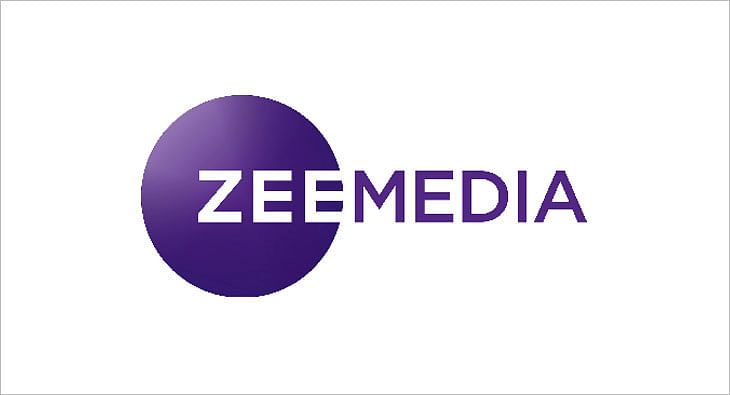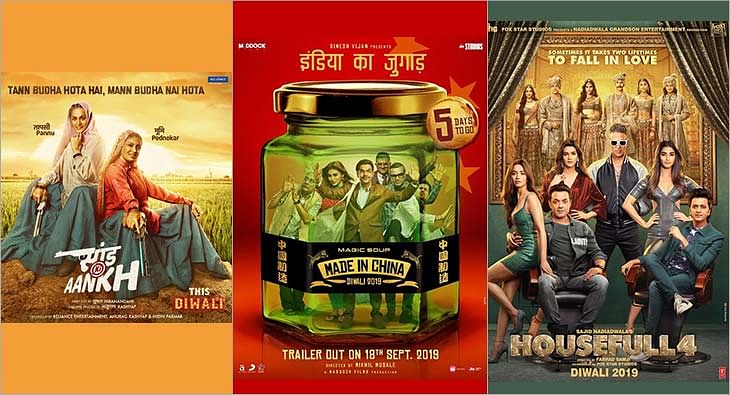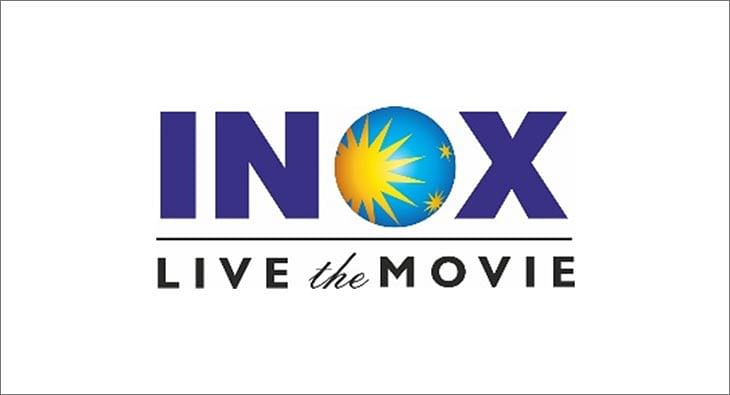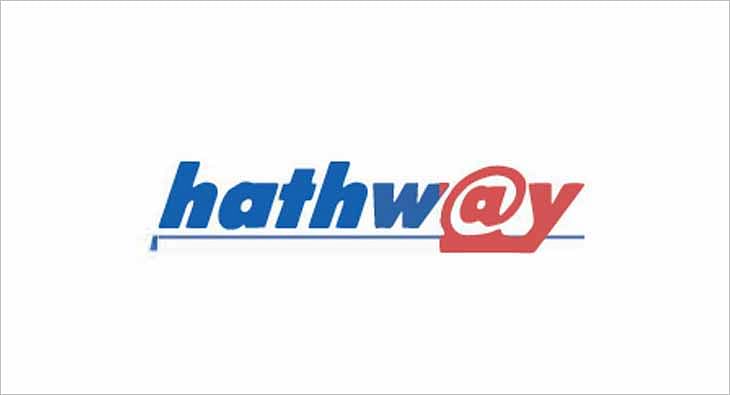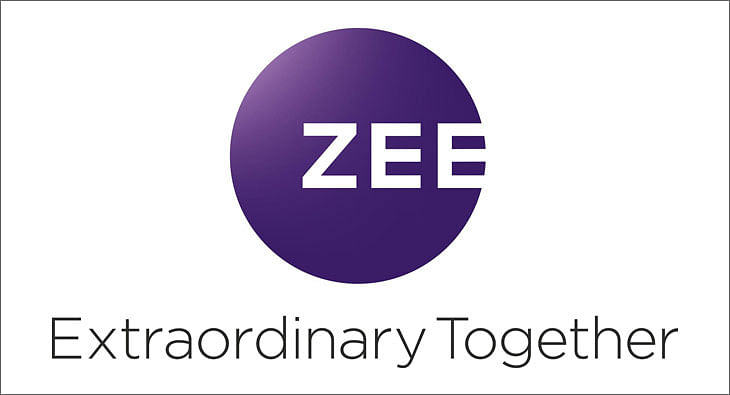Vivid: Indian media – A problem of plenty
Indian consumers are a confused lot as their minds are cluttered by unending multilingual media options, says Annurag Batra of exchange4media Group

• There are more than 700 TV channels and 72,000 plus publications – perhaps all of us did not know the exact numbers, but we know that Indian media is a huge industry. We know it.
• There’s never a dull day in the life of a newsman and his readers/viewers in India. A scam, scandal or a ‘ghapla’ becomes a newsbreak only to be taken over by another. Ah! We know it.
• There’s never just ‘a headline’ in a day; there are always headlines – lead, second lead, belly, below fold, above fold, anchor...no matter; there are always multiple ‘important news’ in a day – WE KNOW IT!
What we must know – and be concerned about – is that in this news environment there is a problem of plenty that’s befuddling the consumers.
According to Robin Jeffrey, a Professor of Politics at La Trobe University in Melbourne, Australia, India is poised for a print revolution. “We need a Hindi version of Citizen Kane. The time is right for it. The Indian newspaper industry throbs with the buccaneer capitalism, Himalayan egos and desperate politics of New York in the 1890s. India is transforming itself, and the print revolution — and especially the daily newspaper revolution — of the past twenty years is helping to propel that transformation. ‘A million mutinies now’ was the best thing about VS Naipaul’s book of that title. Millions of mutinies are, indeed, going on, and the fact that people now read about them in their newspapers, and read about themselves in their newspapers, helps to explain the mutinous environment,” he writes in The Little Magazine.
A revolution or not, the Indian reader – and viewer – is a confused lot today. A new title – print, TV or online – enters the market every few months targeting both, the English and language audience. The consumer’s mind, in fact, is now cluttered by unending multilingual options in newspapers, periodicals, channels, portal, et al. As many of the players are already finding out, it’s indeed becoming an economically unviable in a crowded marketplace where there are too many titles and channels jostling for the reader’s attention.
The Indian television industry
The plethora of laughter challenges and comedy shows – now there’s a dedicated channel to laugh with – does not indicate the gloom the industry is reeling under. In fact, the problem of plenty is taking a slow but steady toll on the industry. Coupled with the unviable industry’s structure, and profitability in sight for just a handful of media companies, the broadcasting companies’ cumulative losses today exceed Rs 10,000 crore.
The Indian television market is huge, worth Rs 34,000 crore and 700 million viewers. But the potential is yet to be realised. Now, with the new Digital Addressable System (DAS) in top four metros from November 1, the industry is hopeful of a booster dose in purchase of multiple TV sets within Indian households and impetus to creation of niche content. For the moment, the industry is still under pressure as advertising rates on TV have not seen any desirable increase and lacks effective partnerships within.
As Subhash Chandra, the pioneer of cable and satellite broadcasting in India says, the industry follows a herd mentality with the same old programming concept for years, which has hurt it bad.
A case in point: Last month, 24 Gantalu, ZEE’s Telugu TV channel was shut down, a retreat necessitated by about 15 ‘politically driven’ news channels in the regional market. Indiantelevision.com quoted a senior ZEE executive as saying that “the entire Telugu TV news business is becoming unviable because of too many players and abnormally low ad rates. Other interests rather than business seem to be the primary motive”.
The Indian print media industry
On the other hand, India, unlike the West, continues to experience a thriving newspaper industry. In fact, circulation and advertising is rising. The newspaper industry has shown a growth rate faster than most other industries, including the far younger television industry. Factors such as cover price ranging from as low as Rs 1.50 to Rs 5 per copy, direct-to-home 24x7 vendor-driven distribution system, and clearly focussing on the majority of the masses – the youth of India, has increased print’s overall revenue share.
But there are alarm bells within this good news, as New Yorker extrapolates. According to the American magazine published by Condé Nast – its other publications include Architectural Digest, GQ, Vanity Fair and Vogue – the newspaper industry here has been able to keep its head above the economic slowdown chiefly by “dismantling the wall between the newsroom and the sales department”. In other words, celebrities and advertisers pay to have in-house reporters write advertorials about their brands in supplementary sections of Indian dailies; the newspapers also enters into private-treaty agreements with advertisers, accepting equity in the advertisers’ firms as partial payment.
These may seem innovations, but who is to draw a line between the ‘right’ and ‘wrong’, where business sense rules? Who is to ensure that the eulogistic articles are not meant to mislead the readers? Who will keep a tab on the erosion of journalistic ethics and how – particularly among the powerful, high-circulation newspapers? Who will ensure that such practices don’t go virulent among the smaller newspapers and are used as means to rake the moolah in?
At the turn of the Millennium, the Indian newspaper industry sold about 58 million copies of dailies in the country’s 13 major languages. This has more than doubled in the following decade. According to estimates, circulation in Hindi has more than trebled since the early 1990s, from under eight million copies a day to more than 25 million. In the same period, the Assamese newspapers have been the top gainers among other languages, with circulation grown from 45,000 to 320,000.
Such exponential growth in newspapers should be good news for a country like India, where close to half its 1.22 billion population continue to remain cut off from the mainstream. Ideally newspapers and TV should serve as windows to not only rest of the country but also the world, thereby empowering the underserved, making them aware, and bringing governance closer to them. Unfortunately, that has not been the case. Given the thousands of publications and hundreds of news channels, the masses find themselves at the receiving end, often relying on unreliable information passed on to them by pretenders and powermongers among journalists. Yes, there has been a rise of such ‘wrongdoers’ in this extremely imperative profession that determines a democratic, aware and vibrant society.
Look for yourself...
The crime files of the last few months reveal the grave danger journalism is in, in the hands of the unscrupulous. In September, free-sheeter newspaper The Goa News editor and his wife were arrested in Jaipur for cheating investors to the tune of Rs 25 crore; the same month, the Bhadohi-based physiotherapist-turned-in-charge editor of monthly Vartamaan Kranti was arrested for publishing an article that alleged hurt the religious sentiments of a community; a journalist was arrested in Bangalore for suspected links with the Indian Mujahideen in August; the same month, a former journalist was nabbed in Jamshedpur for posting inflammatory messages online; and a news editor of the local Ruby Channel in Hyderabad for allegedly airing blasphemous content in July; another incident the same month, Guwahati-based News Live TV channel’s reporter was arrested for allegedly fabricating news by masterminding and filming the molestation of a girl by a gang of youths.
It’s time to recognise there is indeed a problem of plenty within the fraternity. It is time to cull the undesirable and give way to those with credibility and sense of values – for the sake of the nation. In this context, some harsh measures are imperatives for the weed-out, lest Indian journalists become a species posing – to borrow a line from former Resident Editor of The Times of India and the Indian Express in Mumbai, Darryl D’Monte – the most serious threat to journalism not only in this country but in the entire developing world.
The author is Chairman and Editor-in-Chief, exchange4media Group
Read more news about (internet advertising India, internet advertising, advertising India, digital advertising India, media advertising India)
For more updates, be socially connected with us onInstagram, LinkedIn, Twitter, Facebook Youtube & Whatsapp
You May Also Like
HT Media posts Consolidated Total Revenue of Rs 580 crore in Q2
Chairperson and Editorial Director Shobhana Bhartia says due to lower commodity prices and control on costs there has been an improvement in operating profit
HT Media has posted a Consolidated Total Revenue for Q2, 2020 at Rs 580 crore.
As per a statement released by the company, EBITDA for Q2’20 increased by 139%, and margins at 14% vis-à-vis 6% in previous year. This has been driven by softening of newsprint prices and continued focus on cost.
The Net Cash position at a consolidated level continues to be strong.
The Print ad revenue has declined due to sluggish volumes, even as yields have improved. National advertising continues to be soft, although local advertising witnessed growth.
Savings in raw material costs have driven improvement in EBITDA margins.
Chairperson and Editorial Director Shobhana Bhartia said, “Slowing economic growth has hit advertising spends in key categories, putting pressure on revenues across the media industry. As a result, our Print and Radio (on like to like basis) businesses saw revenues dip as compared to a year-ago. However, thanks to lower commodity prices and a tight control on costs, we saw an improvement in our operating profit. On the digital front, Shine, our online recruitment portal has shown good progress and continues to grow. Our outlook for the coming quarter remains cautious, given overall economic sentiment and macroeconomic trends. Cost-control and falling commodity prices should help protect our margins.”
Read more news about (internet advertising India, internet advertising, advertising India, digital advertising India, media advertising India)
For more updates, be socially connected with us onInstagram, LinkedIn, Twitter, Facebook Youtube & Whatsapp
ABP Group posts Rs 15.70 crore as net profit in Q1 FY20
The group’s total operating income stands at Rs 365.55 crore
ABP Group has posted a net profit of Rs 15.70 crore in the first quarter of FY20, as per media reports.
The group’s total operating income stands at Rs 365.55 crore.
It’s net profit for the fiscal ended March 31, 2019, was down 68% to Rs 31.90 crore compared to the previous fiscal.
The Profit Before Interest Lease Depreciation and Tax (PBILDT) has also dropped 53.52% to Rs 107.12 crore.
The group has six news channels - ABP News (Hindi), ABP Ananda (Bengali) ABP Majha (Marathi) and ABP Asmita (Gujarati), ABP Sanjha (Punjabi) and ABP Ganga (Hindi).
Read more news about (internet advertising India, internet advertising, advertising India, digital advertising India, media advertising India)
For more updates, be socially connected with us onInstagram, LinkedIn, Twitter, Facebook Youtube & Whatsapp
Zee Media posts consolidated revenue of Rs 137.03 crore for Q2 FY20
ZMCL has recorded 4.4% growth in operating revenue for first half of FY20
Zee Media Corporation Ltd (ZMCL) has posted a 4.4 per cent growth in operating revenue to Rs 337.6 crore in the first half of FY20, as per media reports.
It has reported a consolidated revenue of Rs 137.03 crore for Q2 FY20.
In a statement, ZMCL has said: “During the quarter, the network expanded its footprint s into Southern India through the launch of Zee Hindustan in Tamil and Telugu languages. This is intended to make the network's content accessible to wider audience.”
The operating expenditure in Q2FY20 has dropped by 21.7 per cent.
The statement further said: “EBITDA for HlFY20 improved by 34.1 per cent to Rs 1,029 million from Rs 767.5 million EBITDA for H1FY19, while the same declined by 9.4 per cent to Rs 370.2 million from Rs 408.7 million for the corresponding period last financial year. EBITDA Margin grew from 23.7 per cent in H1FY19 to 30.5 per cent in HlFY20, while growing from 24.2 per cent in Q2FY19 to 27 per cent in Q2FY20.”
Read more news about (internet advertising India, internet advertising, advertising India, digital advertising India, media advertising India)
For more updates, be socially connected with us onInstagram, LinkedIn, Twitter, Facebook Youtube & Whatsapp
No slowdown here: In-cinema ad rates up by at least 50% for 3 big Diwali releases
Housefull 4, Made In China and Saand Ki Aankh ready to hit the silver screen this week, with the hopes of giving brands the eyeballs they look for in theatres
It’s that time of the year again when theatres gear up to pocket maximum gains. Diwali is here and there are three films ready to hit the silver screen this week--Housefull 4, Made In China and Saand Ki Aankh. The festive period brings much joy to exhibitors, distributors and theatre owners because it ensures footfalls, giving brands the eyeballs they look for. In fact, industry experts don’t feel that economic slowdown this year has impacted in-cinema advertising. While they are concerned about three movies clashing during Diwali, they predict 50-100 per cent rise in ad rates during this period.
Advertising moolah
Mohan Umrotkar, CEO, Carnival Cinemas, is expecting 60-70 per cent surge in advertisement topline compared to last year. “Going by the buzz and advance booking for these three releases, market is bullish. Advertisers have blocked most of the advt-slots during the festival period. Housefull 4, Made In China and Saand Ki Aankh all combined together should generate around Rs 350 crore topline at the box office during the festival week. We are expecting 60-70 per cent surge in the advertisement topline from last year. Also, this year we have added around 14 per cent new advertisers, and 4 per cent of them are first-time cinema advertisers,” he says.
But according to Siddharth Bhardwaj, Chief Marketing Officer - Head of Enterprise Sales, UFO Moviez, things have changed a lot in the last couple of years. “Since some films have not really lived up to their expectation, advertisers are spreading the spends all through the year. They are picking up far more number of titles in the year rather than focusing only on Diwali or Eid.”
“It is good for the industry because you can monetise the inventories beyond just big weeks. A lot of content- driven films have come up which has given us the opportunity to monetise more markets. It has put lesser pressure on Diwali. Most of the cinemas are sold out for Diwali. It becomes difficult to accommodate everything,” Bharadwaj opines. He also reveals that for this week, the inventories are already full.
Diwali ad rates
Experts reveal that ad rates differ from property to property and depends on location as well. But Diwali surely sees a massive hike in rates. This year, theatre owners are expecting 100 per cent rise in ad rates. While Umrotkar revealed that for Diwali, they are charging 100 per cent higher than the regular card rates, Girish Johar, trade analyst and film producer, shared that even the rates for putting up kiosks of brands go up during festivals like Diwali.
“It’s based on property. On a ballpark, ad rates double up. So if you are putting up a kiosk, they charge say Rs 50,000-25,000 for a month. During Diwali, they charge almost double because of the kind of footfalls theatres witness,” Johar revealed.
Economic slowdown? Not for Cinema!
This year, brands have been pulling back their spends on other mediums due to economic slowdown, but cinema seems unaffected. Calling entertainment business recession-proof, Johar explains, “If you see the other side, box office is up by 15-20 per cent. Yes, it is a bit subdued because the brands are in a wait-and- watch scenario. They are increasing their focus around consumption rather than awareness.”
Bharadwaj too seconded it by saying, “These are challenging times but our medium is very efficient. If you see economy has slowed down, but the cinema has grown instead.”
Clash cover
Three movies are clashing this Diwali which means shared screens and box office gains.
“It’s never good for us when two or more big-ticket films release together. If they would have come on different dates, there are chances that more advertisers will take advt. inventory in those weeks separately instead of that one particular week,” shares Umrotkar.
Read more news about (internet advertising India, internet advertising, advertising India, digital advertising India, media advertising India)
For more updates, be socially connected with us onInstagram, LinkedIn, Twitter, Facebook Youtube & Whatsapp
INOX Leisure Ltd sees 42% growth in total revenue
Profit After Tax up 327% to Rs 51 crore
INOX Leisure Ltd (INOX) has reported financials for the second quarter ending September 2019.
Its total revenue has risen to Rs 524 crore with a 42% growth from Rs 369 crore in the corresponding quarter in FY19. Its EBITDA has more than doubled to Rs 107 crore with a 121% growth, while the PAT stood at an impressive Rs 51 crore, up 327% from previous year’s second quarter.
Siddharth Jain, Director, INOX Group, said: “At INOX, setting new benchmarks is now a routine, thanks to our consistently sharp focus on luxury, service and technology and our uncompromised desire to offer our patrons, nothing but the latest and the best! We are delighted with our remarkable consistency on all parameters, and we are sure about maintaining the momentum and focus on innovativeness. Content once again proved that why we term it as the ‘hero’. Thanks to the creators of such spellbinding movies, which keep inviting our guests to our properties, and allowing us to pamper them with our signature hospitality. With the launch of Megaplex, we are delighted to further our endeavor of developing experience-driven cinema destinations of global standards, and we will continue to do so. On behalf of Team INOX, I assure all our stakeholders that we will continue to break barriers and exceed all expectations.”
Read more news about (internet advertising India, internet advertising, advertising India, digital advertising India, media advertising India)
For more updates, be socially connected with us onInstagram, LinkedIn, Twitter, Facebook Youtube & Whatsapp
Hathway Cable & Datacom reports 100% subscription collection efficiency in Q2
The broadband subscriber base has increased from the previous quarter’s 840,000 to 860,000
Hathway Cable and Datacom has reported subscription collection efficiency at 100%, and the broadband subscriber base has increased from previous quarter’s 840,000 to 860,000 in quarter ending September, as per media reports.
It has narrowed its consolidated net loss by 74% and the operating EBITDA has been reported 15% up to Rs 107.5 crore compared to Rs 93.1 crore a quarter ago.
The total income has dropped 2%, while the expenditure is down 6%.
In the financial results, the company has said the FTTH markets are leading growth in customer acquisition.
Read more news about (internet advertising India, internet advertising, advertising India, digital advertising India, media advertising India)
For more updates, be socially connected with us onInstagram, LinkedIn, Twitter, Facebook Youtube & Whatsapp
ZEEL posts 7.4% YoY growth in total revenue for Q2 FY20
ZEEL's domestic advertising revenue has grown 1.4% YoY in Q2FY20
Zee Entertainment Enterprises Limited (ZEEL) has reported a consolidated revenue of Rs 2,122 crore for the second quarter of FY20, recording a growth of 7.4% on YoY basis.
The Earnings Before Interest, Tax, Depreciation and Amortization (EBITDA) was recorded as Rs 692.9 crore with an EBITDA margin of 32.7%. PAT for the quarter was Rs 413.2 crore. The Profit After Tax (PAT) for the quarter was Rs 413.2 million, with a growth of 6.9% YoY.
During the second quarter, ZEEL’s consolidated advertising revenue grew by 1.2% YoY to Rs 1,224.7 crore. The domestic advertising revenues grew by 1.4% YoY to Rs 1169 crore.
ZEEL has posted 26.8% YoY growth in Q2FY20 domestic subscription revenue. ZEEL’s consolidated subscription revenue grew by 19.0% to Rs 723.5 crore during the quarter.
ZEEL’s total expenditure in Q2FY20 stood at Rs 1429.1 crore, higher by 9.9% YoY compared to Q2FY19.
While ZEE5 recorded a peak DAU (Daily Active User) base of 8.9 million in September 2019, ZEE5 users watched an average of 120 minutes of content on the platform in the same month.
During Q2 FY20, the television network had an all-India viewership share of 18.4%.
During the quarter, ZEEL’s international business revenue was Rs 208.2 crore. The advertising and subscription revenues for international business declined by 4.0% YoY and 21.5% YoY, respectively.
Zee Music Company has registered 7.1 billion views on YouTube in Q2.
Punit Goenka, Managing Director and CEO, ZEEL, said, “I am pleased with the performance we have exhibited during the quarter. Our entertainment portfolio continues to grow from strength to strength across all formats and maintained its leading position. Our television network has emerged stronger post the implementation of tariff order on the back of a strong customer connect and brand pull of its channels. ZEE5 continued to gain traction across audience segments and markets, driven by its compelling content library and expanding list of partnerships across the digital eco-system. This strong operating performance allowed us to deliver industry leading growth in both advertising and subscription despite the tough macro-economic environment. Domestic subscription growth of 27% has reaffirmed the value proposition our television network has built over the years. The impact of tariff order has now largely settled down and has brought increased transparency along with improved monetization. Our domestic advertising revenue growth, though significantly lower than historical trend, is higher than the industry growth. We have witnessed an improvement in ad spends through the quarter and we believe that the onset of festive season along with measures taken by the government will help revive the consumption growth.”
Read more news about (internet advertising India, internet advertising, advertising India, digital advertising India, media advertising India)
For more updates, be socially connected with us onInstagram, LinkedIn, Twitter, Facebook Youtube & Whatsapp




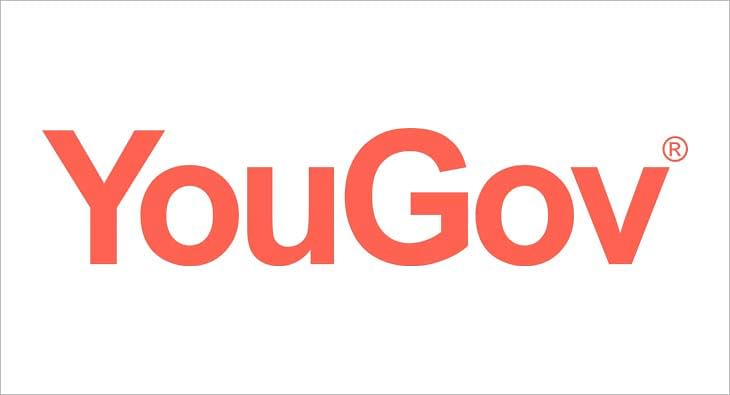
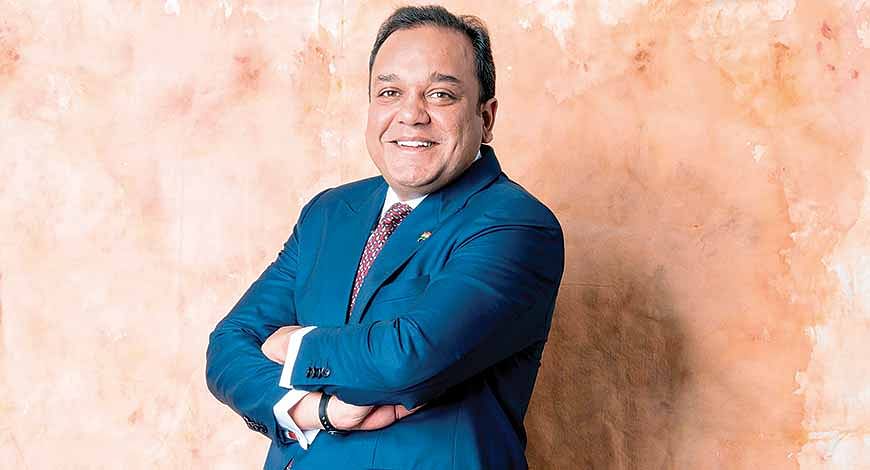
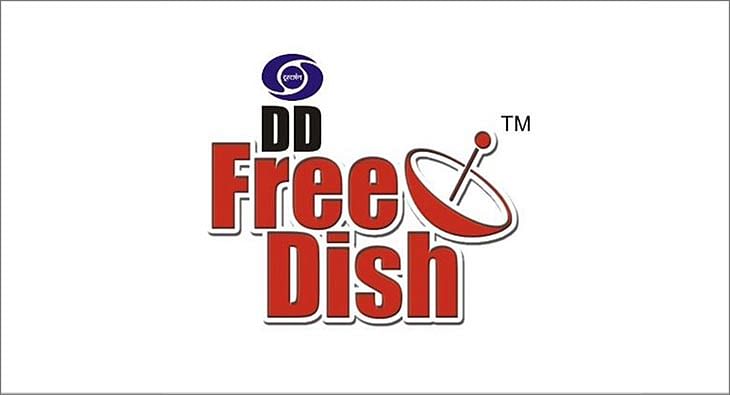







 Share
Share